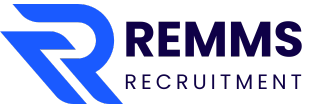
In today’s competitive job market, organizations must employ a systematic and strategic approach to recruitment. The hiring process is pivotal in ensuring that the best talent is identified, engaged, and hired for a position within a company.
This intricate hiring process encompasses various steps that, when executed efficiently, can lead to the successful acquisition of skilled professionals who not only meet the job requirements but also align with the organizational culture.
Identifying Hiring Needs
The recruitment journey begins with a critical assessment to identify hiring needs. This step is crucial, as it lays the foundation for the entire recruitment process.
Hiring needs may arise due to a variety of reasons, including organizational growth, employee turnover, or the initiation of new projects.
It is essential for hiring managers and human resource departments to conduct a thorough analysis of the specific skills and qualifications required for the position.
In many cases, job descriptions are created or updated during this phase. A well-crafted job description does more than merely outline responsibilities. It specifies the skills, qualifications, and experience required, providing a clear picture of the ideal candidate.
By defining these parameters upfront, organizations can better target their recruitment efforts, attracting individuals who are truly suited for the role.
🔗 Read article: How Recruitment Agency Work
Developing a Recruitment Strategy
Once the hiring needs are identified, the next phase involves developing a recruitment strategy. This strategic planning is crucial, as it determines how the organization will approach the market to fill the vacancy effectively.
Key decisions must be made at this stage, such as whether to promote from within the organization, engage in external recruitment, or collaborate with staffing agencies.
Additionally, organizations need to assess their recruitment budget, considering how much they are willing to invest in attracting talent, as well as selecting the right advertising channels.
For example, job postings can be disseminated through various platforms, from popular job boards to professional networking sites like LinkedIn.
Establishing a timeline for the recruitment process is also essential, as it helps to set expectations and milestones for filling the position.
Creating a Job Posting
A critical element of the recruitment process is the creation of a compelling job posting. This document should serve as a reflection of the company’s culture and values while clearly conveying the details about the role.
To attract the right candidates, the job posting should include specific information about the responsibilities of the position, required qualifications, key skills, and the application process.
The language and tone used in the job posting can significantly impact its effectiveness. Crafting a posting that resonates with the target audience can enhance the organization’s attractiveness as an employer.
A well-articulated job description not only outlines what the organization seeks but also invites potential candidates to envision themselves as part of the team, enhancing the likelihood of a positive response.
Sourcing Candidates
The next step in the hiring process involves sourcing candidates. This is where organizations actively seek out individuals who fit the job specifications outlined in the job posting. Sourcing can be divided into two primary categories:
- Internal recruitment
- External recruitment
Internal recruitment focuses on promoting from within the organization. This approach has the dual benefit of rewarding loyal employees while simultaneously fostering career development opportunities.
External recruitment is often necessary to bring in fresh talent and introduce new perspectives. Organizations can leverage various channels for external recruitment, including job boards, social media platforms, and professional networks. Networking events and employee referral programs also serve as effective sourcing strategies, as they capitalize on existing employees’ connections to identify potential candidates.
Screening Applications
Once applications are collected, the screening process begins. This stage is vital for narrowing down the applicant pool to those who meet the basic qualifications for the role.
Organizations might use Applicant Tracking Systems (ATS) to streamline this process. ATS software can filter resumes based on keywords and predetermined qualifications, allowing human resources personnel to focus on those candidates who best match the job criteria.
In some instances, manual reviews may be necessary to assess candidates’ experience and skills more thoroughly.
This might involve a more nuanced evaluation of resumes and cover letters, where recruiters look for evidence of specific competencies, achievements, and cultural fit.
Conducting Interviews
The interview phase is one of the most critical components of the hiring process. Shortlisted candidates are typically invited for interviews, which can take various forms, including phone screenings, in-person discussions, or virtual meetings.
A successful interview process often involves multiple team members to ensure diverse perspectives on the candidate’s fit for the role and the organization.
During interviews, a variety of techniques can be employed to assess candidates effectively.
Behavioral interview questions, for instance, can provide insights into how candidates have handled past situations, while situational judgment tests can reveal their problem-solving and decision-making abilities.
It is also an opportunity for the applicants to gauge the company culture and ask questions about the organization, thus fostering a two-way conversation.
Performing Reference Checks
As candidates progress through the recruitment process, reference checks serve as a critical measure of due diligence.
Before making a final hiring decision, organizations typically reach out to references provided by the candidates to verify their employment history, skills, and work ethic.
This step is essential in mitigating hiring risks and ensuring that the chosen candidate not only possesses the required skills but also fits well within the organization.
Reference checks can provide valuable insights into a candidate’s past performance, help illuminate any potential red flags, and give hiring teams a more comprehensive understanding of what to expect from the potential new hire.
Extending a Job Offer
Once a final candidate has been selected, the next step is extending a formal job offer.
This offer should be detailed and include critical information such as salary, benefits, job responsibilities, and the proposed start date.
Organizations should also be prepared for potential negotiations at this stage, as candidates may seek clarification or adjustments related to compensation or other terms.
Presenting a compelling job offer is essential for securing top talent. It is not merely a transactional engagement; it reflects the organization’s commitment to valuing the candidate’s skills and contributions.
Onboarding New Hires
The recruitment process does not conclude once a candidate accepts an offer. Instead, it transitions into the onboarding phase, where new hires are acclimatized to the organization.
Effective onboarding is crucial for ensuring that new employees feel welcomed and integrated into the company culture. This process may involve completing necessary paperwork, providing training, and introducing new hires to team members and resources.
A structured onboarding program can significantly impact employee retention and engagement, as it creates a positive first impression and sets the stage for future success.
By investing in this stage of recruitment, organizations lay the groundwork for employees to flourish in their new roles.
Evaluating the Recruitment Process
Finally, organizations must evaluate their recruitment efforts to identify areas for improvement.
This involves collecting feedback from hiring managers, candidates, and other stakeholders involved in the recruitment process. Metrics such as time-to-fill, quality of hire, and candidate experience can provide valuable insights.
Continuous refinement of the recruitment process is essential for adapting to changing labor market dynamics and ensuring that the organization remains competitive in attracting the best talent.
By analyzing previous recruitment efforts, companies can develop best practices that enhance their future recruitment strategies.
Conclusion
In conclusion, the recruitment process is a multifaceted journey that plays a crucial role in shaping an organization’s workforce.
By following a systematic approach to recruitment, organizations can find candidates who not only meet the necessary skill requirements but also resonate with the company’s values and culture.
Ultimately, a well-executed recruitment process enhances the likelihood of hiring top talent, thereby contributing to the long-term success and sustainability of the organization.
